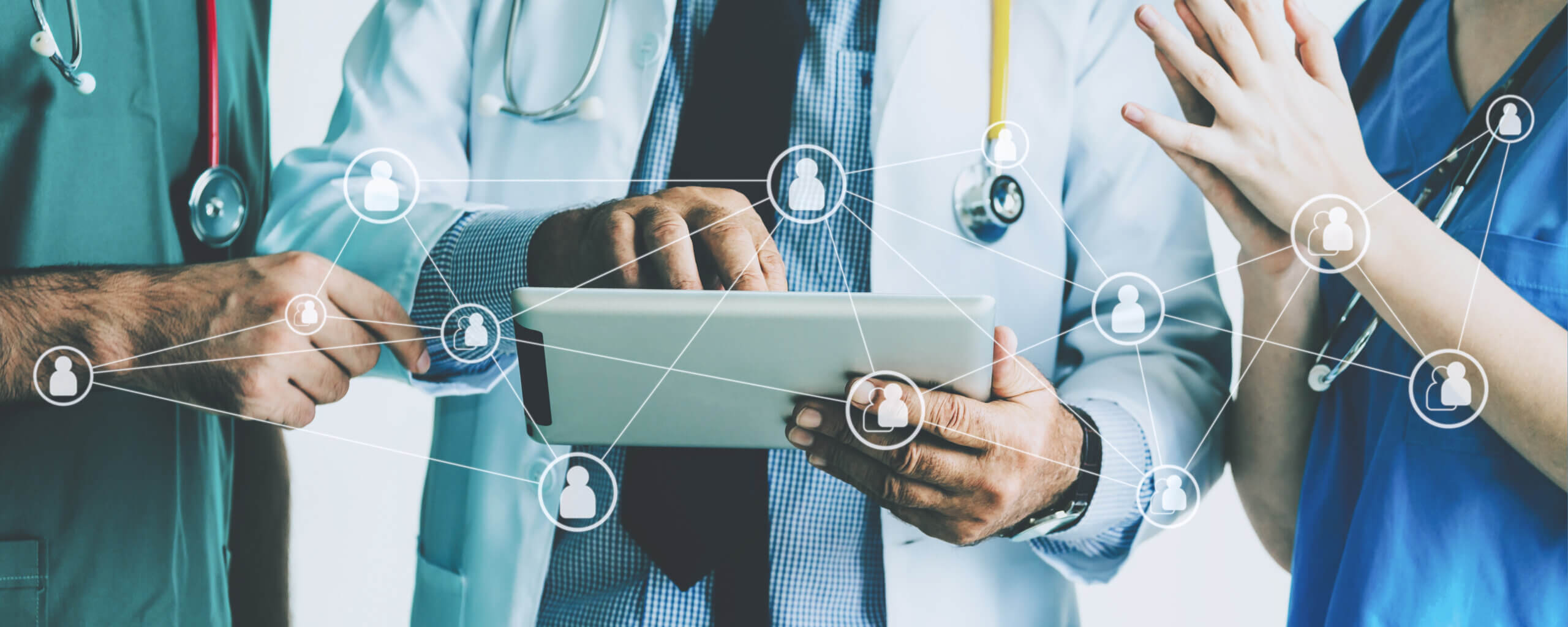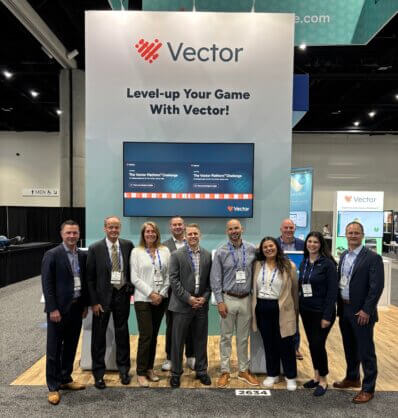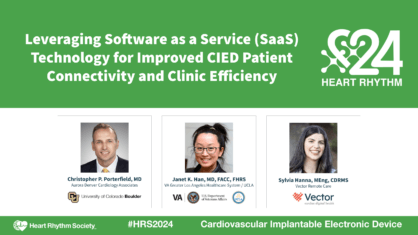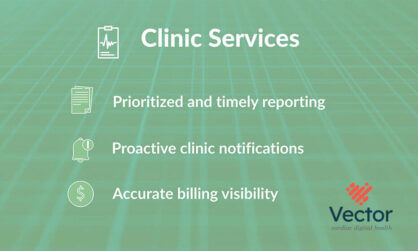Disrupting the Status Quo in Remote Patient Monitoring

Introduction
Medical technology has made remarkable advances in the last 50 years and continues to grow despite disruptions caused by the pandemic. The need to adapt to virtual healthcare solutions due to challenges from the coronavirus pandemic has spurred a trend in the growth of remote healthcare to benefit both patients and clinicians.
Remote patient monitoring (RPM) is one area where an influx of innovative developments has been happening. RPM refers to the collection of health data transmitted to a physician or a primary care provider, who can then review the information to monitor the patient’s health and intervene as needed. RPM technology includes devices used in cardiac care, such as cardiovascular implantable electronic devices (CIEDs), implantable loop recorders (ILRs), and insertable cardiac monitors (ICMs).
The cardiac devices previously used for condition management are now expanding into virtual primary care due to the efficiencies remote monitoring creates for clinics. The remote patient monitoring market growth is in line with the historical rise of chronic heart disease. 51.8% of adults in the US have at least one chronic condition, while 27.2% have two or more, according to the CDC.
However, the growing prevalence of chronic disease and the shift to telemedicine solutions are often constrained by outdated systems and their inability to deliver personalized care at scale. While RPM can create efficiencies and more informed and immediate care, the increase in patient populations and data has left clinics unable to fully harness the intended benefits of RPM and instead has become unmanageable.
By examining the history of remote patient monitoring and how current trends have impacted the challenges clinics are currently facing, we uncover opportunities to disrupt the status quo.
History of Cardiac Remote Monitoring
Remote cardiac monitoring was first introduced in the 1970s with the advent of pacemakers that used trans-telephonic monitoring (TTM) which transmits data over telephone lines.
In the late 1990s, a new trend in remote cardiac monitoring devices emerged, adopting wireless technology that transmitted data when the patient placed a transmitter over their pacemaker. Later, fully automated remote cardiac monitoring devices were developed in 2001 that transferred patient data to the patient’s cardiologist or physician.
Modern-day remote monitoring devices now provide a complete view into the health of patients and their device status. They relay information to the physician automatically without requiring an in-person visit.
CIEDs can now transmit health data in real-time, not just to update that the device is functioning properly but also to track the patient’s condition. The advent of ILRs and ICMs grew cardiac RPM capabilities beyond therapeutic monitoring to diagnostic and proactive care. Moving forward, modern cardiac clinics will expand their RPM to include vitals data for a more integrated care plan for heart failure patients.
While cardiac devices have continued to become more sophisticated, remote monitoring programs have not advanced at the same rate. There is an opportunity for the industry and clinics to optimize their patient and data management for the future of cardiac remote monitoring.
Adoption of Remote Monitoring as the Standard of Care
Remote monitoring for CIEDs was established as a Class 1A recommendation by the Heart Rhythm Society in 2015 and allowed clinics to adopt it as the standard of care confidently. This move meant that clinics could cut down on in-person visits for device interrogation, which would increase efficiencies and more easily manage patients in real time.
Cardiac remote patient monitoring devices can track arrhythmias and episodes in real-time so that physicians and caregivers can respond to issues before they escalate and quell heart problems before they worsen. This frees up the capacity of healthcare systems to care for patients through:
- Decreased hospitalizations
- Preventing deteriorating health
- Monitoring the efficiency of treatment
- Improving the efficiency of healthcare services
- Reducing the burden on emergency workers
Challenges of Remote Monitoring
Remote patient monitoring technology has made remarkable strides but there are obstacles yet to overcome related to the ability of healthcare systems to increase patient connectivity and efficiently process the data.
Poor Connectivity
CIEDs are prone to connectivity failures like any wireless device. In a 2022 survey published by Allied Health Professionals, 88% of respondents cited patient connectivity as a major concern with RPM devices.
Connectivity issues include problems like:
- Troubleshooting home heart monitors
- Managing disconnections when they happen
- Lack of connectivity in rural areas with weaker signal strength
Staffing Issues
CIED implants are specialized devices that require training to use. Not all health clinics and hospitals have the resources to keep CIED-trained staff on standby or even keep up with their staffing needs in general.
In a 2022 study about remote monitoring device management, administrative and financial issues cite significant barriers to implementing RPM use, such as a lack of applicants qualified to use such devices and the lengthy training process involved.
Large Volume of Data
The sheer number of alerts, check-ups, and monitor updates becomes a logistical issue when this data has to be manually sorted and analyzed. The amount of required user input and manual data analysis makes implementation non-scalable. This is amplified due in large part to the over-representation of non-actionable alerts for routine check-ups or false positives.
How These Challenges Came About
All cardiac device manufacturers have remote monitoring workflows and native UI that don’t integrate with one another. In addition, while devices across manufacturers function similarly, the data is not formatted consistently. This variability across the industry leaves the burden on clinics to review transmissions in separate portals and manually interpret data, creating significant inefficiencies and increasing the risk for clinics – especially as their patient volume grows.
As these devices become more sophisticated, patients have trouble understanding their value or how RPM devices help them. Most patients have little to no knowledge of using remote healthcare monitoring equipment. Emphasis on patient and caregiver education and engagement is growing to ensure activation of remote monitoring, creating an additional burden on clinic staff and resources.
Reimbursement Problems
Finally, there’s the issue of how these devices get funded. RPM devices are sophisticated technology that requires specialized technicians to monitor and operate and doesn’t come for free.
Physicians complain that payment rates for RPM devices are too low and that claims by providers have unclear specifications and aren’t structured enough to enable self-reporting health data. This requires clinics to hire additional administrative staff to process these claims, which eats into their overhead that they could otherwise invest in life-saving equipment or trained healthcare staff.
Why It’s Time to Leave Behind the Status Quo
The current model for analyzing RPM data and distributing them in healthcare systems is unsustainable and requires too much manual labor. Many clinics are still manually managing data across all portals or are using an antiquated system that isn’t solving the most pressing needs.
Clinics who manage remote monitoring manually must go into each manufacturer portal separately, interpret each alert as they come in, and oversee the engagement of each patient. It’s also very common for clinics to use legacy systems that consolidate data but do nothing to interpret or prioritize it, making remote monitoring even more overwhelming and unmanageable. These outdated practices have created data management chaos in clinics across the nation but an unfortunate but expected by-product of remote monitoring.
There is more need for simplified and streamlined remote monitoring. Insider Intelligence estimates that more than 26.2% of the US population will need remote patient monitoring devices by 2025. Manual data management and basic RPM technology will not suffice. Automated RPM systems reduce clinic response times, saving valuable time to optimize patient care. It also saves hospitals and clinics precious time spent doing mundane administrative tasks to do what they do best.
The Future of Remote Monitoring
To fix these problems, clinics need a third-party remote monitoring system that consolidates patient data, standardizes it according to a clinic’s needs, and provides patients with stable and reliable connectivity.
Just these small changes would save doctors and nurses hours of administrative work and thousands of dollars in administrative costs, so they’re enabled to do the work they do best.
Remote monitoring can be a logistical hassle to keep and train clinic staff to use, but it doesn’t have to be that way. Clinic and hospital administrators can make the most out of their remote monitoring system if they:
- Seamlessly integrate all manufacturer data into a single portal with unified reporting so that no matter where the transmissions originate, they use consistent language for efficient review across all reports
- Tailor reporting rules to clinic protocols for reports that are signature-ready
- Filter out the “ noisy” alerts and direct only the critical alerts for staff to review
- Manage patient status in a single dashboard so immediate action can be taken to get patients connected and transmitting
If both clinics and manufacturers can address these issues, RPM technology can open up to focus more on proactive rather than reactive care.
Keeping a Pulse on Remote Cardiac Monitoring
RPM is a valuable technology that can improve the conditions of millions through accurate and timely diagnosis. For that to happen, clinics need to use RPM automation that increases patient engagement, prioritizes the most urgent alerts, and filters out the noise of non-clinically relevant transmissions.
Vector Remote Care offers simple and sophisticated software and services that help clinics optimize their remote cardiac monitoring programs. Get in touch with us to learn more about how you can take steps to optimize your remote monitoring program.














